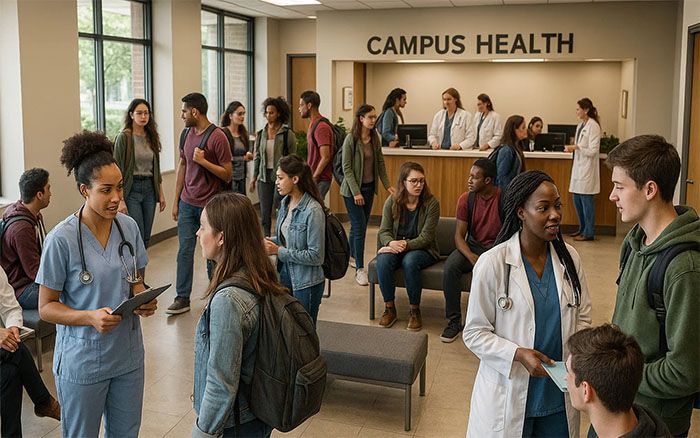Modern Accessibility Services in Higher Education
The number of college students who report having disabilities has nearly doubled since 2004. Accessibility services on college campuses are vital for ensuring all students succeed. As the understanding of disabilities evolves, so do the strategies for support.
To gain deeper insights into these developments, our team attended the recent AHEAD Conference in Baltimore. A session titled “Postsecondary Disability Resources and Accessibility – Where Are We Going and How Did We Get Here?” was led by Ian Kunkes, Enjie Hall, Jon McGough, Charnessa Warren, and Maria Schiano. These experts offered valuable perspectives on the evolving landscape of disability services.
Here’s what we learned and what we’ll discuss in this blog:
- The history of accessibility services
- Increasing demand and need for comprehensive support
- Changing attitudes and increased disclosure
- Moving towards inclusive designs
1. History of Accessibility Services
The movement for disability resources in higher education can be traced back to UC Berkeley.
In 1962, Ed Roberts, a bright and ambitious student with polio, sought admission to UC Berkeley. Through meetings with university officials and his mother, arrangements were made for him to live in Cowell Hospital instead of the residence halls.
UC Berkeley was a pioneer in accommodating students with disabilities, igniting a civil rights movement that paved the way for the Americans with Disabilities Act (ADA).
While the Civil Rights Act of 1964, marked a significant step forward, it wasn’t until 1990 that the specific needs of individuals with disabilities were explicitly addressed through the ADA.
Since then, the pace, complexity, and volume of accommodation requests have steadily increased, requiring a corresponding expansion of disability office staff and resources on college campuses nationwide.
2. Increasing Demand and Need for Comprehensive Support
The surge in accommodation requests necessitates increased staffing for college disability offices. One-on-one meetings with students are increasingly crucial for understanding and meeting their unique needs.
This growing complexity is further exemplified by the rising number of emotional support animals on campus, reflecting a broader evolution in student support requirements.
The Wall Street Journal reported a staggering 171% increase in accommodation requests for SAT and PSAT examinations between 2010 and 2017, underscoring the rapid pace of change in this arena.
In response to this growing demand, modern accessibility services now emphasize holistic support, incorporating comprehensive support plans beyond simple “yes/no” accommodations, ensuring students have access to a wide range of resources.
3. Changing Attitudes and Increased Disclosure
The National Center for Education Statistics reports that about 20% of undergraduate students and nearly 11% of graduate students have a disability.
The increase of accessibility information online has led to more students disclosing their disabilities and seeking accommodations.
As a result, disability is increasingly recognized as a critical dimension of diversity, alongside race and gender.
This heightened awareness has led to a growing emphasis on comprehensive support, exemplified by the rise of Comprehensive Support Plans. These plans recognize that access alone is insufficient and that students require additional resources to thrive.
4. Moving Towards Inclusive Design
Furthermore, the future of disability resources is focused on Capacity Building Strategies, where programs, departments, and physical spaces are designed to be accessible to the broadest spectrum of individuals.
This approach ensures that accessibility is an integral part of the campus infrastructure, providing equal opportunities for all students.
As institutions continue to evolve, it’s crucial to integrate these strategies to create a more inclusive and supportive environment for students with disabilities, ensuring they have the resources and support they need to succeed academically and personally.
5. Key Takeaways
The evolution of disability services in higher education reflects a growing commitment to inclusion and equity. From its pioneering beginnings at UC Berkeley, to the complex landscape of today, the journey has been marked by significant progress.
By embracing inclusive design principles and fostering a culture of understanding, institutions of higher education can create environments where all students can reach their full potential.












